Contact Lenses Are Not One-Size-Fits-All

Contact Lenses Are Not One-Size-Fits-All
Have you ever worn a pair of pants that were too small? They might be tolerable at the beginning of the day, but by the end of the day, your waist is uncomfortable, you feel like you can’t breathe, and when you finally take them off, they leave a mark where the waistband was fitting too snug. The consequences of a day in tight pants are that you had to skip a big lunch and you couldn’t pick anything up off the floor. Now imagine we’re talking about a contact lens on your eye that doesn’t fit. It’s too tight, it does not permit your eye the oxygen it needs, it’s nearly impossible to remove, and it leaves a mark when it does come out. The consequences of a poorly fitted contact lens could be a scratched cornea or red-eye with inflammation and residual scarring.
Besides the power in a contact lens that corrects your blurred vision, there are other important numbers that your Optometrist considers when fitting your contact lenses.
The Base Curvature defines the amount of curve in a lens. If your eye is shaped flat like a plate, and you wear a contact lens that is shaped like a bowl, the lens is going to fit too tight. You will feel the edge of the lens where it rests on your eye, your eye may become red as the day progresses, and you may develop inflammation. This is the result of a lack of oxygen from a lens that is so tight it impedes blood flow to your cornea. Alternatively, if your eye is shaped like a baseball and you wear a contact lens that is shaped like a plate, you’re likely to feel the movement of that loose lens throughout the day and to experience significant fluctuation in your vision as it moves on your eye.
The Diameter of a contact lens specifies its size. It is surprising to most that a larger contact lens is typically more comfortable and provides more stable vision, especially in the case of astigmatism.
The Big One: What’s it made of? The amount of water, silicone, wetting agent, and the general make-up of a contact lens determines how moist it will stay, how much oxygen passes through it, how long it can be worn, and how often it should be replaced.
The frequency with which a person plans to wear contacts, the activities that he or she will be doing while wearing the contacts, medications the person is taking, and an examination of the tears on the eye are all things that should be considered by your optometrist in selecting the appropriate contact lens.
Contact lenses to suit your lifestyle
If you want to have a positive experience while wearing contact lenses, you need to make sure you’re buying the right type for your vision as well as your lifestyle needs.
Will you remember to take your lenses out every single day? If not, daily wear contacts would be more suitable. However, if you do not want to buy daily wear contacts then extended wear styles might be more appropriate for you.
Daily disposable lenses are great if you work in an environment that isn’t always pristinely clean or dry (e.g., bartender, hairdresser, pilot, or flight attendant), since a fresh, clean lens is never more than one day away. They are also ideal if you are a medical worker concerned about a higher infection risk.
At what age should you start wearing contacts?
Determining if your child is ready for contact lens wear is tricky. While some children as young as seven may be ready for contact lens wear, some adolescents are not.
Options for fitting children in contact lenses are similar to those with any other age group. Soft lenses are the most commonly used modality for general refractive cases such as myopia, hyperopia, and regular astigmatism. Many manufacturers offer extended range parameters for patients with high amounts of myopia and hyperopia, keeping the overall cost to a minimum for the patient and avoiding the need to switch to custom soft lenses.
Which lenses are best for Myopia control
Single vision prescription glasses and contact lenses are used to correct myopic vision but fail to treat the underlying problem. Multifocal contact lenses, typically used to improve near vision of people over the age of 40 years, correct myopic vision in children while simultaneously slowing myopia progression by slowing eye growth.
Every year new contact lenses are introduced to the market. A great eye doctor will stay informed of new contact lens developments in order to ensure you the greatest vision and health in contact lens wear. Contact lenses are not one-size-fits-all, and should not be fitted this way. You are unique and you deserve to wear contact lenses and pants that fit you well!





